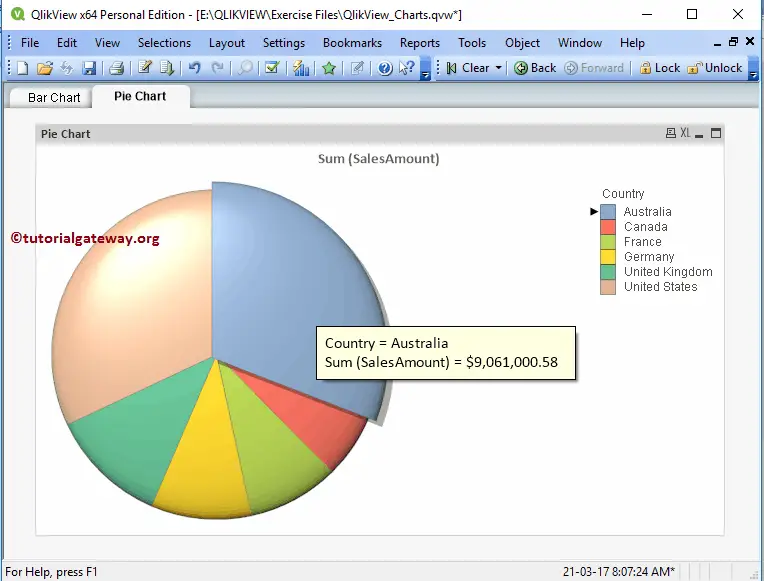The pie chart in QlikView is useful for displaying country-wise, region-wise sales, etc. Let us see how to Create a Pie Chart in QlikView with an example. For this Qlikview Pie Chart demo, we will use the data in the following Excel table.
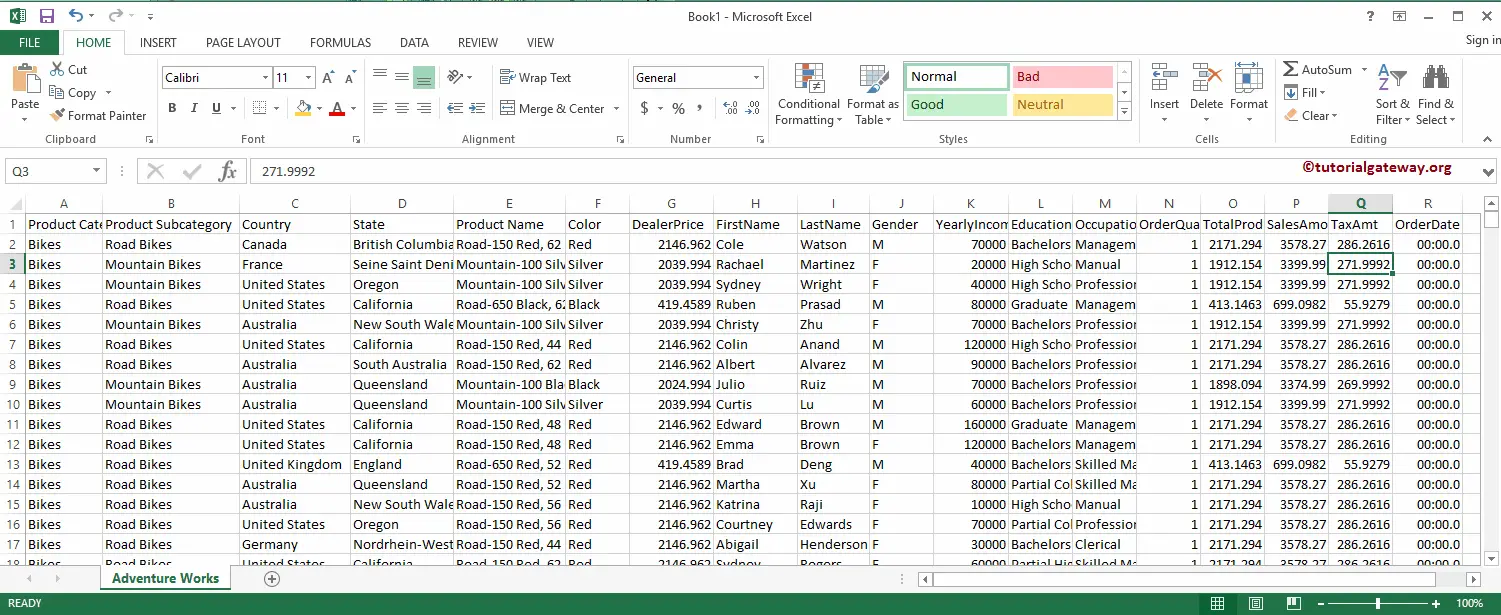
From the screenshot below, see that we are loading the above specified excel sheet into QlikView.
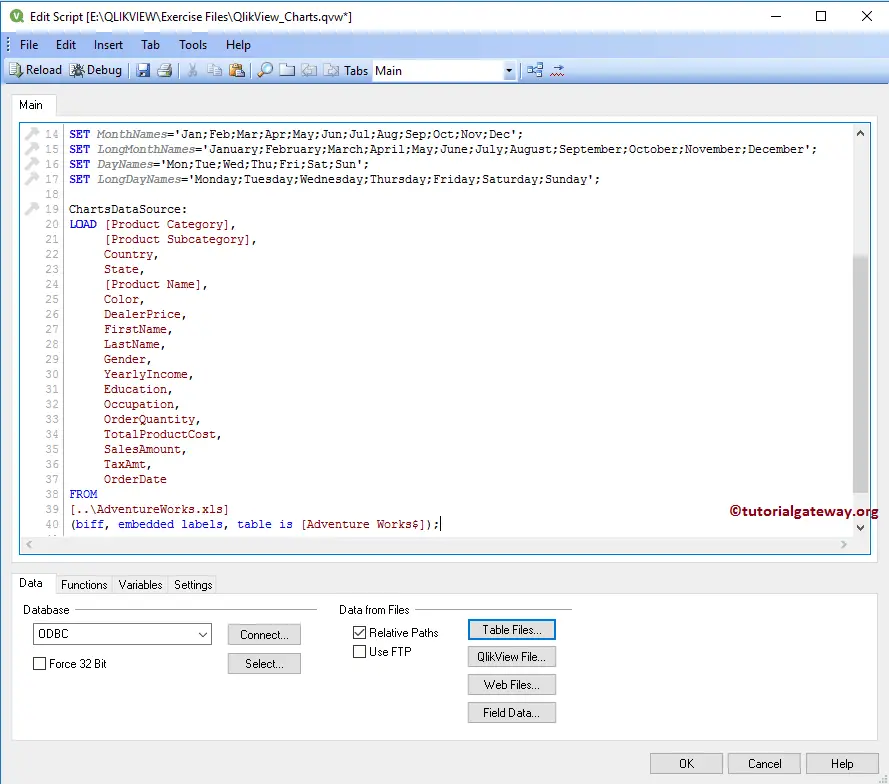
Create a Pie Chart in QlikView
In this Pie Chart example, we find out which country had the maximum sales share (big slice). For this, we will use the Country Column as the dimension data and the Sales Amount expression as the slice size.
We can create a QlikView pie chart in multiple ways: Right-click on the Report area and open the Context menu. Please select the New Sheet Object and then select the Charts.. option.
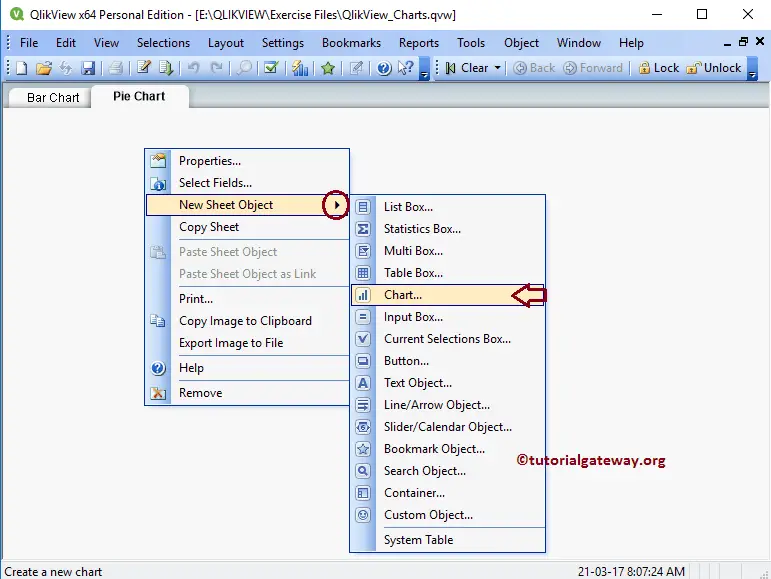
Second approach: Please navigate to Layout Menu, select the New Sheet Object, and then select the Charts.. option
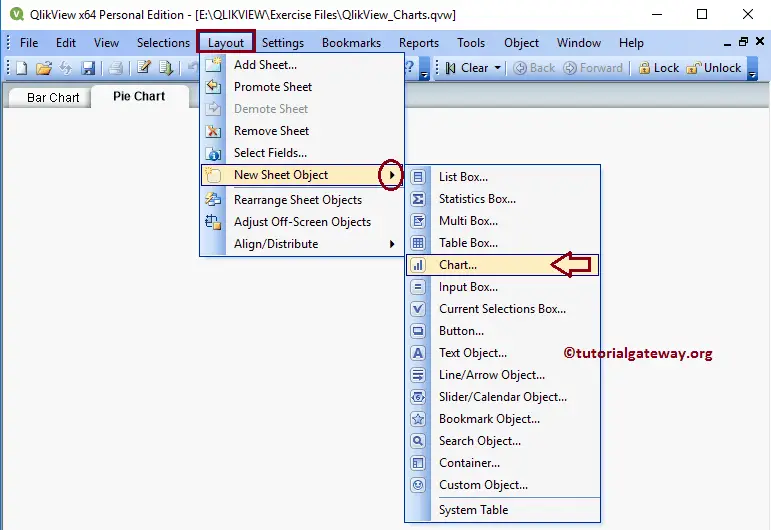
Either way, it opens a new window to create a Pie Chart. Here, we assigned a new name and then selected the Pie Chart as the type.
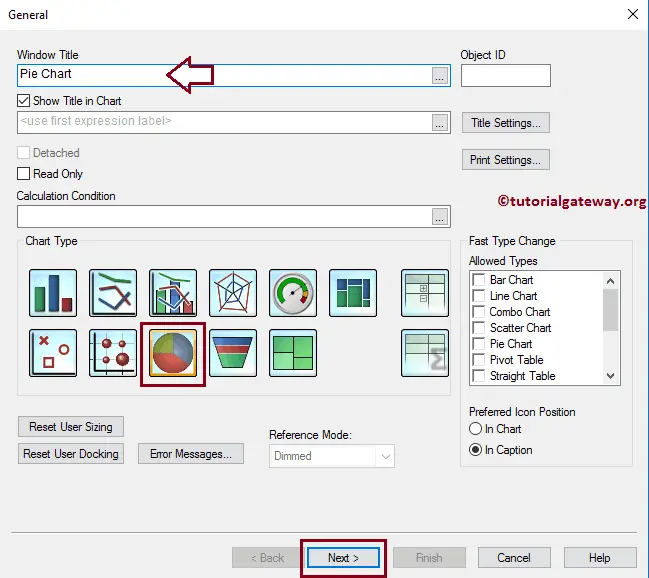
Please select the Dimension column to use in the QlikView Pie chart. We are adding the Country dimension to the used dimension section for this example. Refer Import data from Excel to QlikView article in QlikView to understand importing the excel tables.
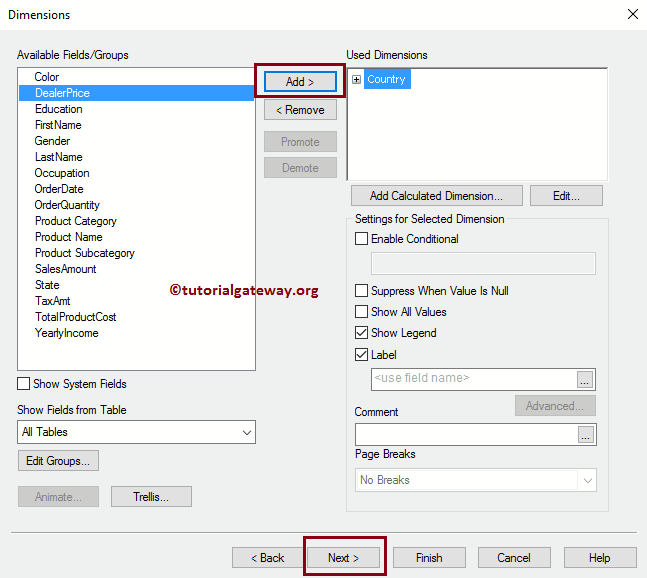
Clicking the Next button on the Dimension page opens the Expression page. On top of that, a pop-up window called Edit Expression opened. Use this window to write the custom expression for the QlikView Pie Chart data or select the Columns.
Here, we select the Field as Sales Amount and Aggregation as Sum. If you know how to write an expression, write it in the empty space under the Expression OK section.
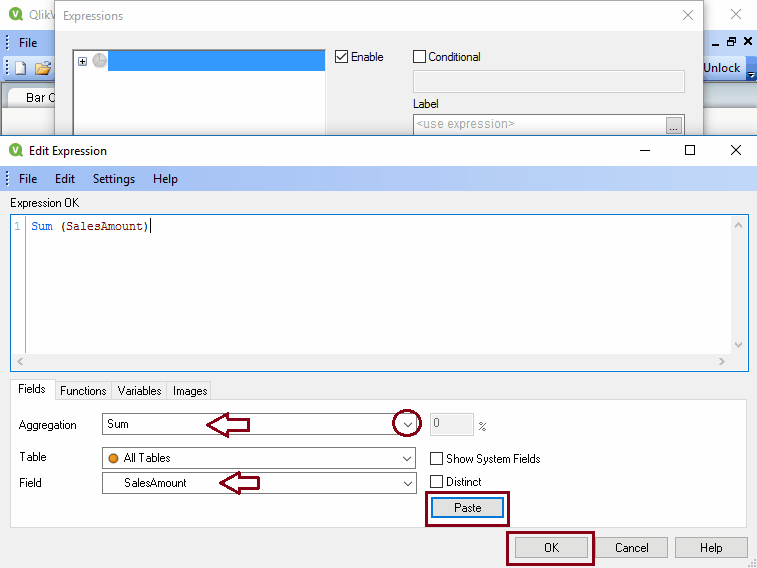
Click the OK button to close the edit expression window, then click Next.
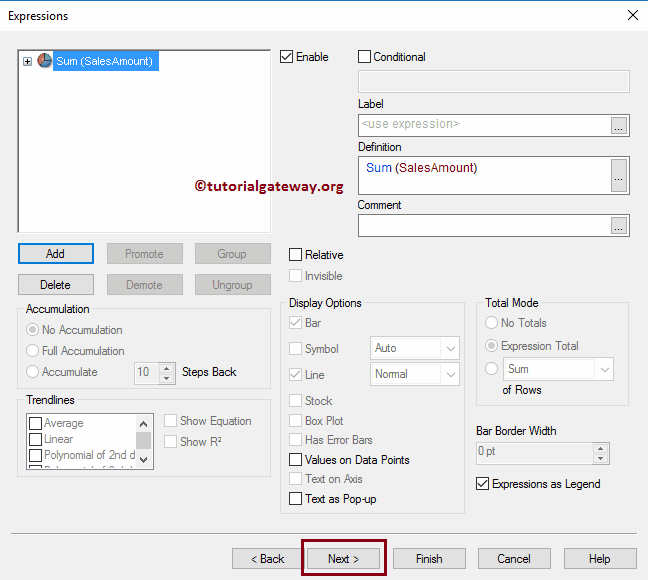
Here, specify the sorting order for the dimensions. In this example, we sort the country Names in Ascending order.
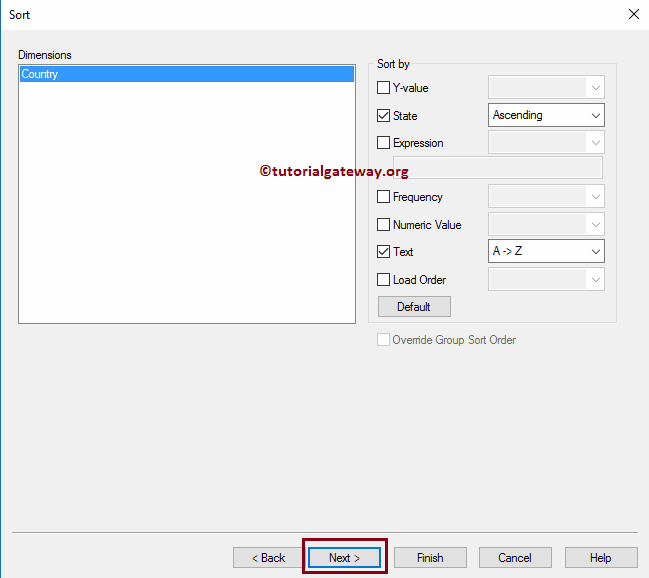
The next page is to change the look and style. Here, we can select the 3D or 2D Pie chart.
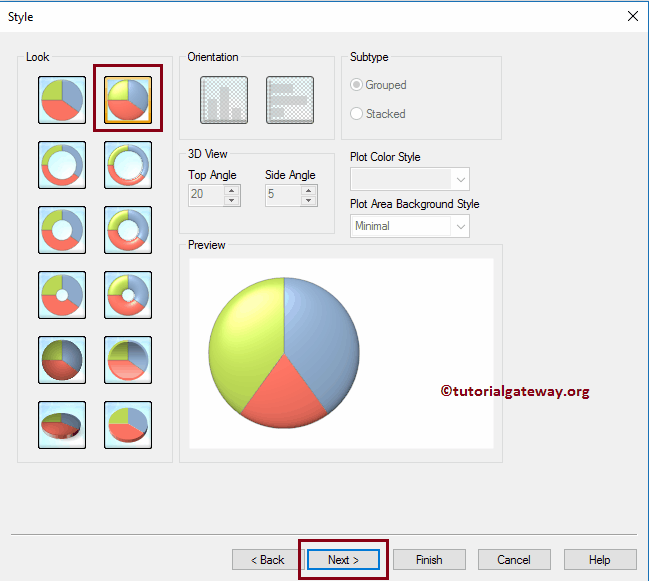
The presentation page is to alter the QlikView Pie chart settings:
- Pop-up Labels: Hovering the mouse on the pie chart displays the corresponding Expression Value and the Dimension name. In this example, it displays the Country Name and Sales Amount
- Suppress Zero-Values: Ignore the zeros
- Suppress Missing: Ignore the Nulls
- Highlight: Hovering the mouse on the pie chart slice pushes a bit forward (we can say it is highlighted).
- Show Legend: Do you want to show the legend or not? If so, checkmark this option; otherwise, uncheck it.
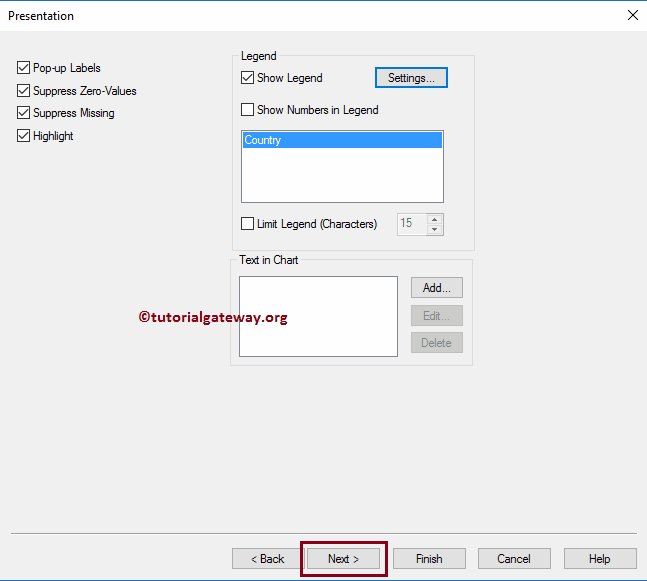
The Colors page is useful for changing the QlikView Pie Chart Color pattern. Here, we are leaving it to default settings.
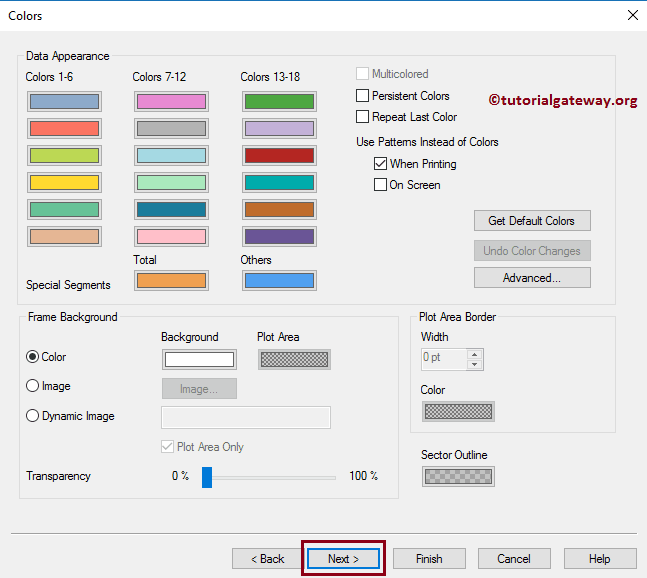
Next, we are formatting the Expression value. It only reflects when we display the data labels or data points. As we all know, the Sum of the Sales Amount is money, so we are selecting the money.
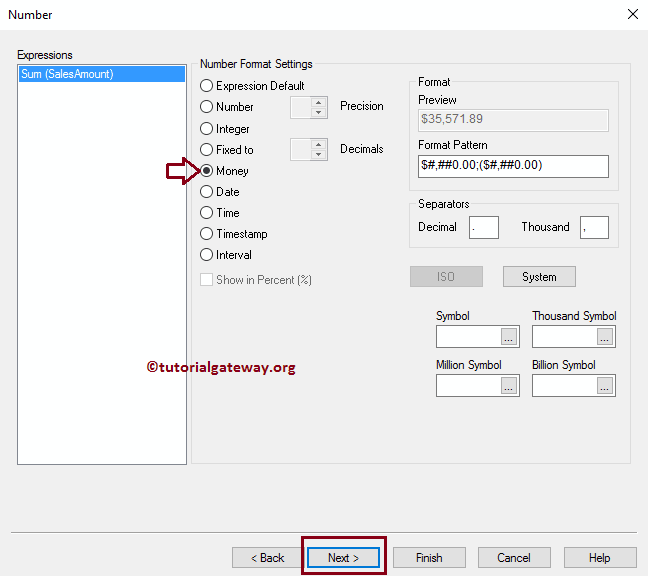
Please change the Font family, style, and font size as per requirements. Here, we change the Font to Calibri and the font size to 12
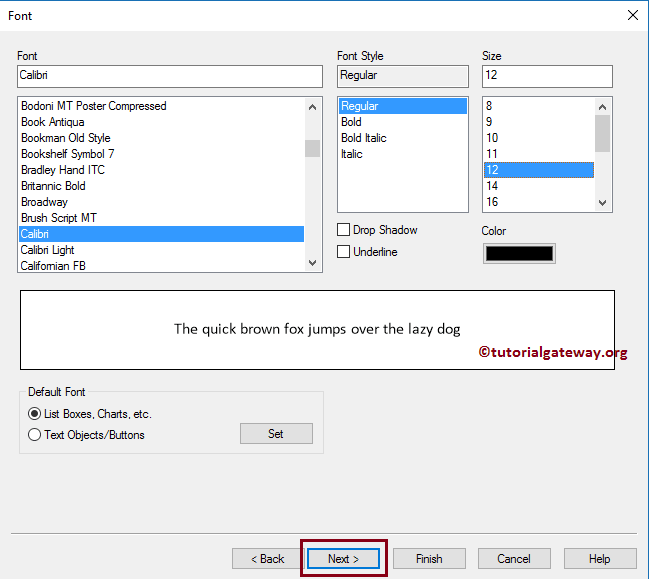
The Caption page stylized the QlikView Pie Chart Caption. It means color, background, position, etc. Once completed, click the Finish button. Here, we changed the Font color.
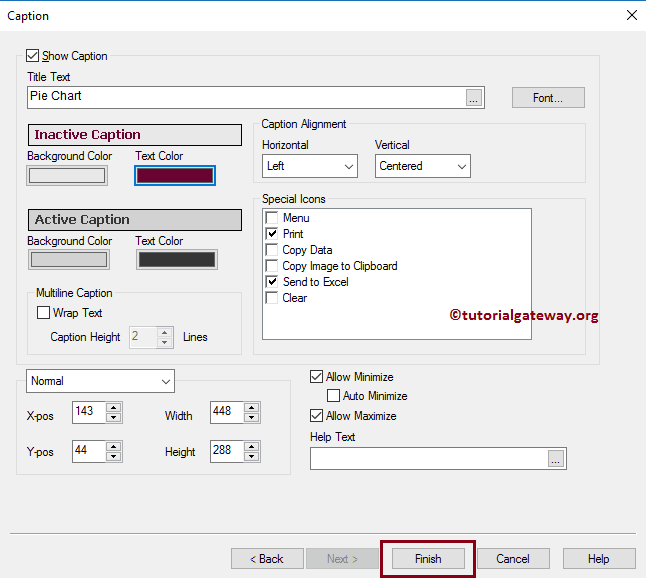
Now, see our newly created Pie Chart in QlikView.
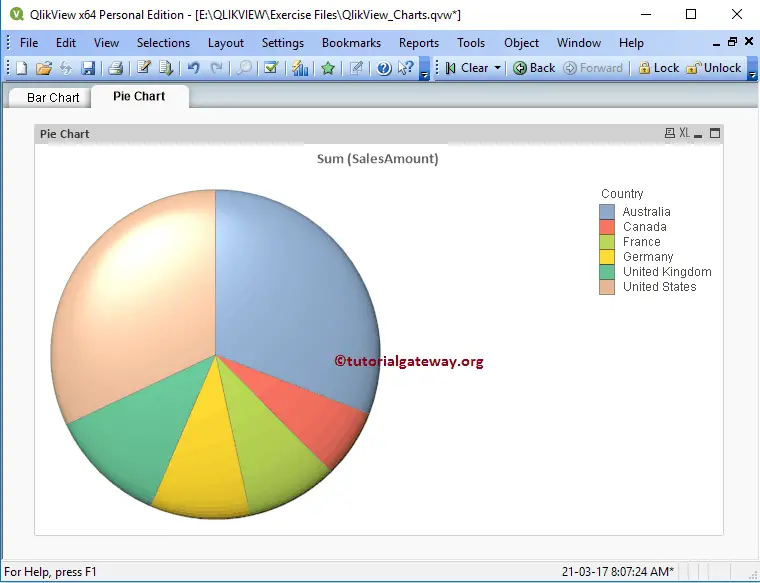
Let us hover over the mouse in the Australian region. From the screenshot below, we see it is slicing up with the Data label.
